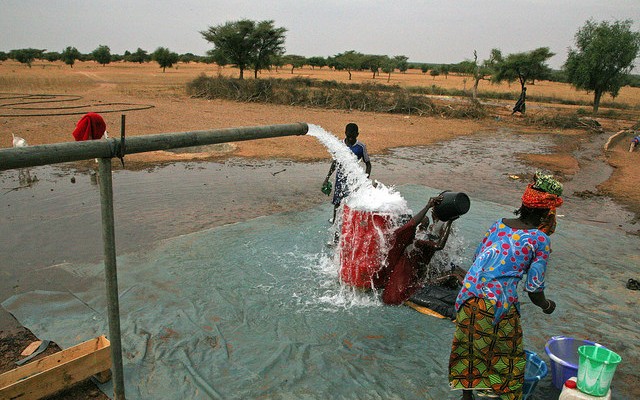Written by Peter Newborne, Research Associate Water Policy Programme, Overseas Development Institute-ODI
Access to water is crucial in arid and semi-arid regions. A key question is how far cities can require distant rural areas to provide water for their – growing – inhabitants.
This issue is arising in a number of countries in Africa. In Burkina Faso, the answer – at least to-date – is that the big city is king! The capital, Ouagadougou, draws most of its water from the Ziga dam, 50 kms away, while villages situated near Ziga are prohibited from using the reservoir for drinking and irrigation (upstream of the dam).
Ouagadougou has currently about 2.3 million residents and is growing. The official city plan is designed to accommodate 3-4 million residents in 2025. International studies meanwhile forecast further population growth, up to 6 million or even, potentially, 8 million in 2050. That kind of increase would put ‘great pressure’ on Ouagadougou ‘with environmental tensions’ due to increased water and energy needs’. Cities/towns in Burkina can be ‘engines’ of economic growth, but currently most Burkinabé live and work in the fields. Thriving rural communities need water for productive use; where their access is limited, they will tend to migrate to the cities/towns, thereby increasing urban water demand.
A new study carried out by the University of Ouagadougou II and the Overseas Development Institute-ODI in 2014/15 – as part of the PRISE project calls for a balancing of water for cities and water for the country, based on assessment of infrastructure investment options benefiting both. The University and ODI are inviting government representatives and other key actors to meet to discuss the urban-rural balance, which is the subject of this preliminary study.
The city-rural water balance is an issue elsewhere in Africa, for example in Kenya where it is proposed to take water via a tunnel from the river Tana, in the rural county of Murang’a, to Nairobi, and in Tanzania where demand for water for the cities of Arusha and Moshi has resulted in many tributaries of the Pangani river now only flowing for part of the year. The former ‘Northern Water Collector Tunnel Project’ in Kenya is being studied by the ‘WISE-UP to Climate’ project which is promoting the formulation by decision-makers of climate change robust investment plans that combine built and ‘natural’ infrastructure – both civil engineering and natural management – allocating social and economic benefits in a cost-effective and equitable manner.
Keep up with the author — Peter Newborne, PRISE Research Associate — on Twitter via @PeterNewborne.
Image: Rajeshree Sisodia/PRISE

